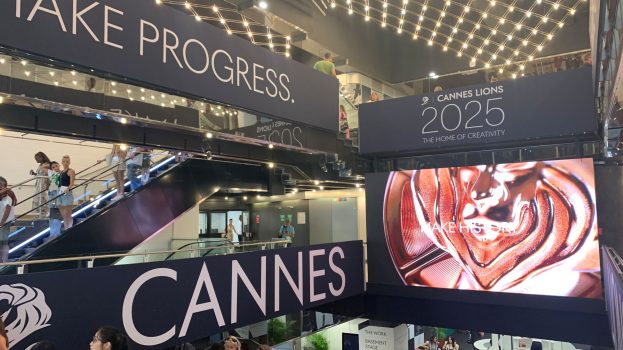This story originally appeared in the March/April 2019 issue of Strategy.
There’s this new term bubbling up in the media: “pause-vertising.” While it’s genius in theory, I’m starting to wonder if the new ad format falls short on moving the industry forward.
New “pause” ads from Hulu appear on screens during a TV show, but only when viewers hit pause to go to the bathroom, for example. They’re commercial breaks triggered by couch potatoes, in essence. That’s the genius part.
Where the strategy goes wrong, is when you consider pop-ups. Though less intrusive, the Hulu ads are essentially an evolved version of the web’s interstitial format. The advertising industry is in flux, but it seems the sales pitch is still very much alive – even after years of brands claiming that “pull” is the new “push” marketing.
Speaking with Variety about the new ad format, Hulu’s Jeremy Helfand said moments like reaching for a snack is a “natural break in the storytelling experience” – so why not jump in to surprise and delight (as we’ll no doubt hear some marketers soon recite)? While I support innovation on the format front, I also believe that brands are more approachable – and ultimately more effective – as content, not commercial, creators.
Long ago, U by Kotex proved that marketers can catch far more brand loyalists with entertainment, than promotion. No static “pause” ad will marshal the degree of engagement that Carmilla did with its legion of creampuffs, I’m willing to bet. The Hulu format is less intrusive, yes, but does it push the industry forward as much as when a marketer creates branded content that people wilfully opt into watching?
Harley-Davidson and Casey House (two AToMiC trophy-takers) worked in collaboration with networks HBO and Discovery to program branded content for broadcast. In Harley’s case, its “film-ercial” was seven hours long – the equivalent of 4,200 six-second ads, all rolled into one long ad (presumably watched over time), seen by almost as many viewers of The Big Bang Theory in Toronto each week.
That’s a lot of time engrossed, uninterrupted for the most part, in a single brand. Which is part of a point P&G’s Marc Pritchard has been making for years. As he succinctly said to a room full of agencies, as reported by CNBC, in 2017: “There’s too much crap… We bombard consumers with thousands of ads a day, subject them to endless load times, interrupt them with pop-ups and overpopulate their screens and feeds.”
The CMO has since been calling for advertisers and agencies to ignite collabs that spark “fewer and better ideas that last longer.” Canada, for its part, seems to be leading some of that co-branded/funded film charge. Tim Hortons, for example, recently aired a documentary in partnership with Sportsnet. The branded content about Kenya’s lone ice-hockey team aired right after a game, creating that “natural break” advertisers seek.
Content – if I may be so trite – is still king. Bombarding consumers with television’s equivalent of a pop-up ad is not – especially if your M.O. aligns with the rest of the industry to ultimately get people to press play, not pause.























